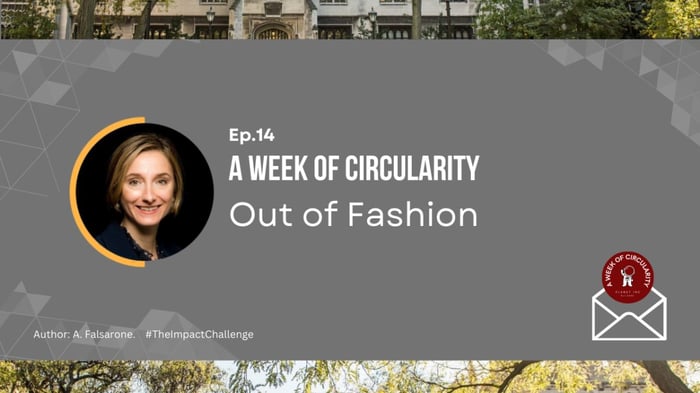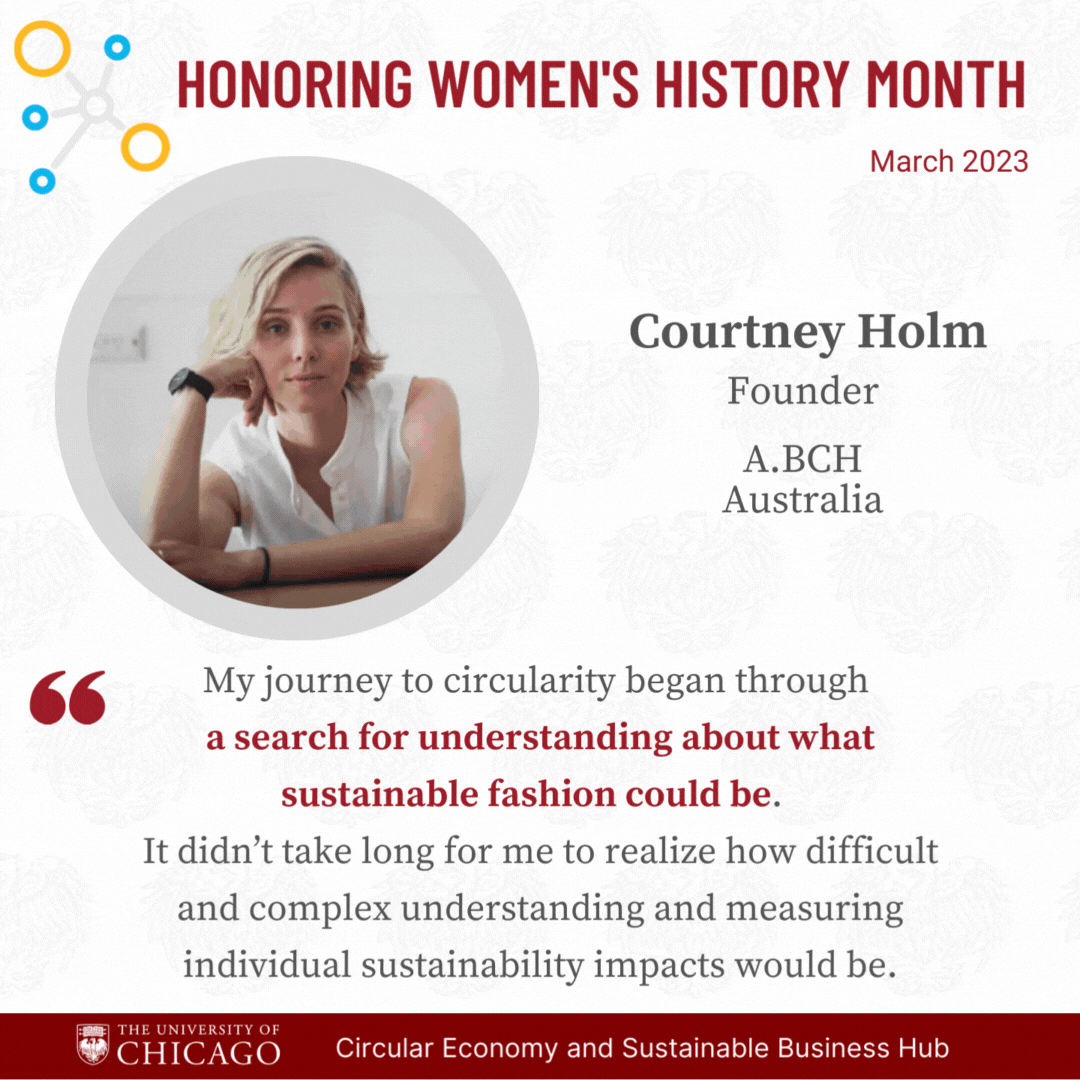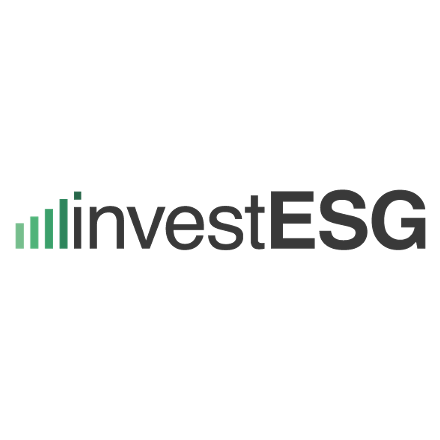NEWSLETTER by Alessia Falsarone

 >> click to zoom in Credit to the white paper: "Textiles and the environment in a circular economy" (ETC/WMGE 2019/6) One effective approach to innovating business models towards a circular textile system is to prioritize the longevity and durability of garments. At the same time, implementing policies that focus on education and behavioral change can lead to tangible outcomes in a shorter time period.
>> click to zoom in Credit to the white paper: "Textiles and the environment in a circular economy" (ETC/WMGE 2019/6) One effective approach to innovating business models towards a circular textile system is to prioritize the longevity and durability of garments. At the same time, implementing policies that focus on education and behavioral change can lead to tangible outcomes in a shorter time period.  Circular business models with longevity and durability in mind strive to extend the quality and lifespan of clothing items by promoting longer and more frequent use. To achieve this goal, many focus on improving both the physical attributes (textile quality) and the emotional durability of garments (how long people remain passionate about their clothing and how long these garments remain in fashion).Quite a number of brands are taking steps to extend the longevity and durability of their textile products by using timeless designs, fostering customer attachment through storytelling related to social initiatives, participating in environmental projects, and creating personal connections with designers or producers. Consumer behavior plays a crucial role in enabling business models based on longevity and durability, requiring education on the economic and environmental benefits of using clothes longer and purchasing more durable garments, as well as promoting repair skills and proper maintenance practices for durability, such as appropriate washing guidelines.Public policies, including reduced value-added tax on repair services (introduced in Sweden in 2020), eco-design measures, and incentives for green public procurement, have the potential to inspire the necessary changes in consumer behavior.In the interim, the EU's Eco-design for Sustainable Products Regulation (ESPR) is promising to zero in the over 25 billion garments of annual imports, making a product's origin the potential avenue to influence the textile and fashion industry way beyond the EU borders. Circularity Roadmaps ExplainedOne of the most well-known studies in the field, the Ellen MacArthur Foundation's report titled "Vision of a Circular Economy for Fashion" provides a blueprint to operationalize the shift towards a sustainable and circular textile system.It acknowledges that existing circularity initiatives, mostly small-scale, lack the capacity to create significant disruption of the current system, especially when considering its social impacts.It's a humbling assessment.A sustainable circular system should be socially just and distributive by design, so the added value generated is shared among all actors in the textile ecosystem. Workers at all parts of the value chain should benefit from safe and just working conditions, gender equality and inclusivity.
Circular business models with longevity and durability in mind strive to extend the quality and lifespan of clothing items by promoting longer and more frequent use. To achieve this goal, many focus on improving both the physical attributes (textile quality) and the emotional durability of garments (how long people remain passionate about their clothing and how long these garments remain in fashion).Quite a number of brands are taking steps to extend the longevity and durability of their textile products by using timeless designs, fostering customer attachment through storytelling related to social initiatives, participating in environmental projects, and creating personal connections with designers or producers. Consumer behavior plays a crucial role in enabling business models based on longevity and durability, requiring education on the economic and environmental benefits of using clothes longer and purchasing more durable garments, as well as promoting repair skills and proper maintenance practices for durability, such as appropriate washing guidelines.Public policies, including reduced value-added tax on repair services (introduced in Sweden in 2020), eco-design measures, and incentives for green public procurement, have the potential to inspire the necessary changes in consumer behavior.In the interim, the EU's Eco-design for Sustainable Products Regulation (ESPR) is promising to zero in the over 25 billion garments of annual imports, making a product's origin the potential avenue to influence the textile and fashion industry way beyond the EU borders. Circularity Roadmaps ExplainedOne of the most well-known studies in the field, the Ellen MacArthur Foundation's report titled "Vision of a Circular Economy for Fashion" provides a blueprint to operationalize the shift towards a sustainable and circular textile system.It acknowledges that existing circularity initiatives, mostly small-scale, lack the capacity to create significant disruption of the current system, especially when considering its social impacts.It's a humbling assessment.A sustainable circular system should be socially just and distributive by design, so the added value generated is shared among all actors in the textile ecosystem. Workers at all parts of the value chain should benefit from safe and just working conditions, gender equality and inclusivity.  >> click to zoom in | Credit to the white paper: "Textiles and the environment in a circular economy" (ETC/WMGE 2019/6) It may not take long until the price of textiles and clothing could ultimately reflect the environmental and societal costs of all materials and production processes. Investing in the Circular EconomyWhether as providers of startup innovation funding or on behalf of traditional capital allocators in more liquid markets, investors continue to look for ways to incorporate the benefits of going circular into their assessment of the global fashion and retail sectors.The team at Amundi, led by Caroline Le Meaux, has dedicated a comprehensive industry review to explore what it may take for circularity to become the new look of fashion. After all, this is an industry that still lacks sound circularity best practices and enough regulatory backing to support their adoption.
>> click to zoom in | Credit to the white paper: "Textiles and the environment in a circular economy" (ETC/WMGE 2019/6) It may not take long until the price of textiles and clothing could ultimately reflect the environmental and societal costs of all materials and production processes. Investing in the Circular EconomyWhether as providers of startup innovation funding or on behalf of traditional capital allocators in more liquid markets, investors continue to look for ways to incorporate the benefits of going circular into their assessment of the global fashion and retail sectors.The team at Amundi, led by Caroline Le Meaux, has dedicated a comprehensive industry review to explore what it may take for circularity to become the new look of fashion. After all, this is an industry that still lacks sound circularity best practices and enough regulatory backing to support their adoption.  >> click to zoom in Credit to Amundi Asset Management (2022) The first aspect to note is that the environmental impacts of this historically fully linear system are becoming more of a factor in the purchase decisions of responsible consumers.
>> click to zoom in Credit to Amundi Asset Management (2022) The first aspect to note is that the environmental impacts of this historically fully linear system are becoming more of a factor in the purchase decisions of responsible consumers. Only about 1% of clothes are recycled or reused, which is concerning given that over 50% of fashion items are disposed of within a year of being purchased.
Industry-wide, the circular economy is not yet thought of as a business strategy that will affect the business model of a company in the long-run. Rather, it is perceived as a series of actions - whether in sourcing, product development, marketing, distribution or customer experience - which lack a clear direction. When rethinking the lifecycle of garments, physical qualities such as durability, reparability and longevity make up the core elements of a circular model for the industry.
When rethinking the lifecycle of garments, physical qualities such as durability, reparability and longevity make up the core elements of a circular model for the industry. Traditional investors may need to expand their ability to offer innovation financing in order to benefit from the circular economy in high stake sectors such as the fashion industry.
You don't want to miss this weekFrom Kitakyushu (Japan) to Geneva, Chicago and Toronto, this week offers new opportunities to connect with fellow circularity practitioners both in person and in hybrid mode.Discover, grow and leave your mark!April 3rd-5th: 70th Session of the United Nations Economic Commission for Europe (UNECE). Run-up events (virtual; registration link). Elisabeth Türk, Director, Economic Cooperation and Trade Division, UNECE will host a series of virtual side events to look at specific aspects of the circular economy transition, including the role of policies and institutions, innovation and private sector engagement, value chains, and digital solutions. With participation of Mike Werner and representatives from the Circular STEP Network, UNECE’s policy dialogue platform on the circular economy launched a year ago.
April 3rd: Lessons for Japan’s Circular Economic Future. (Hybrid format; Ito Campus, Kyushu University). This seminar explores the opportunities and challenges facing Japan as it shifts toward a circular economy (CE). Freek van Eijk, Managing Director of the Holland Circular Hotspot will provide an introduction to CE developments in the Netherlands. Scott Valentine, chair of the Australia Circular Economy Hub advisory board will then share insights into the circularity approach of Melbourne`s northern municipality, Hume City. Shiko Hayashi, Programme Director of the Kitakyushu Urban Centre of the IGES will then introduce the cross-organization efforts in the city of Kitakyushu.
April 3rd: Join us in welcoming Evan Wiener from H&M to our practitioner series. With over a decade of experience in scaling circularity strategies at leading global retailers, Evan will share with us how investing in the circular economy can drive growth in a zero-carbon world, empowering consumers to make purposeful purchase decisions.
 April 5th: A Circular Economy for Plastics in Canada (Virtual). Hosted by Ruben Dubelaar, Holland Circular Hotspot in collaboration with the Dutch Consulate General in Toronto, the event will bring together policy experts, scientists and entrepreneurs across the Dutch and Canadian value chain to discuss the current trends, challenges and developments in circular plastics. Through a panel discussion the audience will also explore collaboration opportunities between Canada and the Netherlands.
April 5th: A Circular Economy for Plastics in Canada (Virtual). Hosted by Ruben Dubelaar, Holland Circular Hotspot in collaboration with the Dutch Consulate General in Toronto, the event will bring together policy experts, scientists and entrepreneurs across the Dutch and Canadian value chain to discuss the current trends, challenges and developments in circular plastics. Through a panel discussion the audience will also explore collaboration opportunities between Canada and the Netherlands. Honoring Women's History MonthCourtney Holm, the founder of circular label A.BCH (ABCH Pty Ltd) is making strides in transforming the fashion industry from her studio in West Melbourne, Australia, through sheer experimentation and a commitment to circularity.Her latest innovation? A surplus fabric marketplace that enables the re-circulation of unused, surplus, and waste textiles.Join me as we honor Courtney's journey in the circular economy and get inspired by her reflections to conclude Women's History Month.
 Infographic adapted by the author for the newsletter (2023)
Infographic adapted by the author for the newsletter (2023) Off to another impactful week!
about Alessia Falsarone is executive in residence, practitioner faculty at the University of Chicago, where she leads the Circular Economy and Sustainable Business program. The article is based on the author's newsletter A Week of Circularity from the innovation knowledge hub. All opinions expressed are those of the author and/or quoted sources. investESG.eu is an independent and neutral platform dedicated to generating debate around ESG investing topics.

